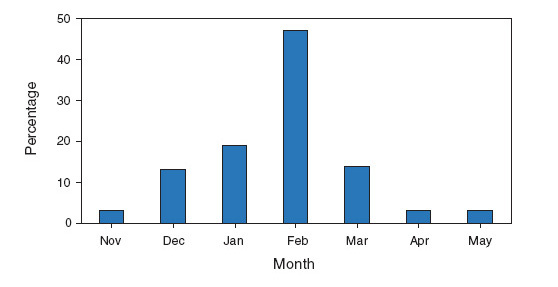In a Press Release dated August 3, 2010 about the European Union’s Parliament plenary session and adopted resolutions, it seems that several items of business need to be noted and called to the attention of the U.S. HHS, CDC, FDA, U.S. Supreme Court, and—most of all—the U.S. Congress.
First, and probably foremost:
“Assessments of and communication about flu outbreaks must be more independent, says the resolution. Safeguards are needed to prevent conflicts of interest. For example, declarations of interest by experts who advise European health authorities should be published. And under EU legislation, full liability for vaccines must lie with the manufacturer, not Member States.” [Emphasis added] (http://www.europarl.europa.eu/en/pressroom…)
How come in the USA vaccine manufacturers are left off the hook for liability that, incidentally, was reaffirmed by SCOTUS February 22, 2010 in Bruesewitz v. Wyeth, 09-152, while under EU legislation, “full liability for vaccines must lie with the manufacturer, not the Member States”?
Second:
“The World Health Organization is asked to review its definition of a ‘pandemic’, to take into account the severity of the illness, not only the spread of a virus. To buttress the EU’s own risk assessment capacity, the European Center for Disease Prevention and Control should be equipped to assess risks independently as well as perform its other tasks, say MEPs.” [Emphasis added]
Applause, applause, applause! The World Health Organization NEVER should have made such a disastrous declaration IF it wants to keep its credibility factor intact. WHO needs to revert back to the original medical dictionary definition of a pandemic and not play ‘pharmaceutical-like’ games in the medicalization of society.
Third:
“…[T]he potential influence of pharmaceutical companies in response processes.”
Unfortunate, however, that is where the devil lies—within the detail: Pharmaceutical companies’ influence through advertising, lobbying, media, conflicts of interest, pseudo-science published in pharma-owned ‘peer review’ journals, and downright strong-arm scare tactics.
Incidentally, many question possible ‘retribution’ to the country of Poland for not accepting the pabulum offered about the 2009 Swine flu and not purchasing billions of dollars worth of H1N1 flu vaccine. So, did Poland’s coincidentally losing its high echelon government officials in an airline crash have anything to do with that? (http://www.guardian.co.uk/world/2010/apr…)
We may never know, but anything is possible when it comes to the politics of vaccines, it seems, including ignoring apparent deaths from adverse vaccine reactions. However, what we do know is that many countries were left with extraordinary large surpluses of unused H1N1 flu vaccine that had to be destroyed or, possibly, recycled?
Fourth:
“…[A] resolution adopted by Parliament on Tuesday which weighs up the cost of vaccination programmes and the relative risks.” [Emphasis added]
Perhaps this is more relevant than we know, especially since it would cut into profits of vaccine manufacturers if such common-sense scientific measures are adopted and prevail.
That leads to statistics reported in the EU Press Release that “H1N1 had caused 2,900 deaths in Europe by April 2010, which compares with 40,000 for seasonal flu in a moderate year.” The latter number just may be extrapolated from the U.S. CDC’s Key Facts about influenza (flu) & Flu Vaccine:
Over a period of 30 years, between 1976 and 2006, estimates of flu-associated deaths range from a low of about 3,000 to a high of about 49,000 people. Source: (http://www.cdc.gov/flu/keyfacts.htm) How Serious is the Flu?
However, the CDC had to adjust its H1N1 flu deaths. Take a look at this from CDC’s own web site:
- CDC estimates that between about 8,870 and 18,300 2009 H1N1-related deaths occurred between April 2009 and April 10, 2010. The mid-level in this range is about 12,470 2009 H1N1-related deaths. (http://www.cdc.gov/h1n1flu/estimates_2009_h1n1.htm)
Peak Month of Influenza Activity
1976—77 through 2008—09 Seasons
 (http://www.cdc.gov/flu/about/season/flu-season.htm)
(http://www.cdc.gov/flu/about/season/flu-season.htm)
A most interesting question presents its ugliness in asking, “How does the CDC know if deaths occurred from H1N1, seasonal flu, or pneumonia, since the CDC stopped testing for flu type, e.g., H1N1, early on in the pandemic when it was apparent that the pandemic would not pan out. Please click on this CBS News link for Swine Flu Cases Overestimated? (http://www.cbsnews.com/stories/2009/10/21…)
It is with great admiration that this writer embraces the European Union’s Press Release Swine flu: learning from past mistakes. Everyone—and particularly U.S. federal health agencies along with individual states health agencies—must take seriously what the EU has adopted as a resolution on Swine flu.
We cannot afford to spend billions of dollars on false pandemics that only discourage health consumers about the credibility of the World Health Organization, government health agencies, and in particular, the U.S. HHS, CDC, and FDA. Furthermore, vaccines are being produced now without much oversight and testing, which only leads to more doubts about people rolling up their sleeves or having their children vaccinated.
Isn’t it about time the U.S. Congress takes its oversight job of federal government agencies seriously? Not only are vaccine ingredients dangerous, so are the politics of vaccinations.
